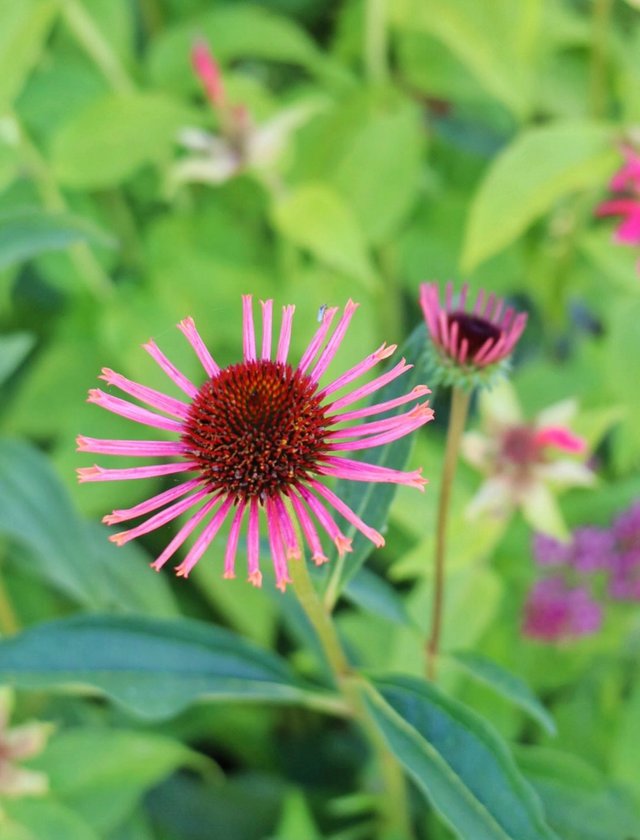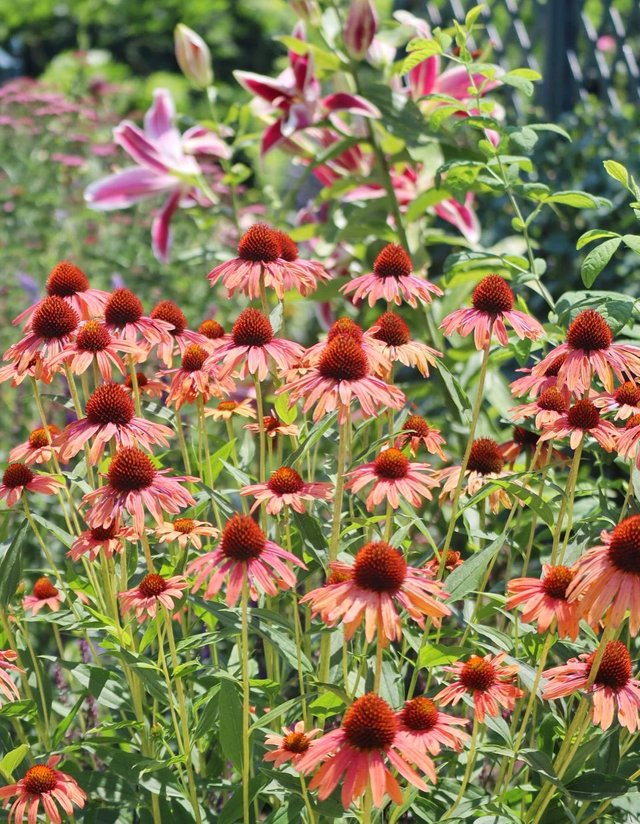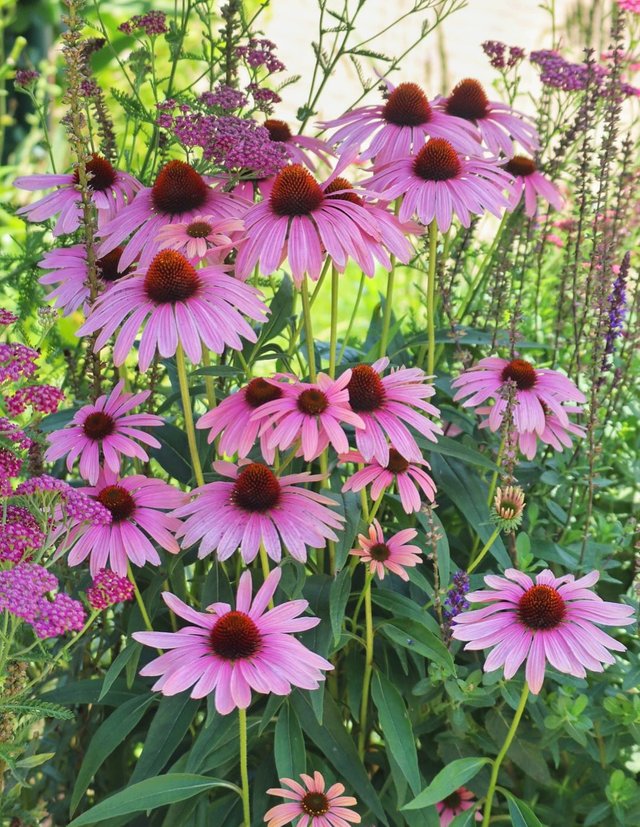Purple Coneflower
In the wild prairies of North America, a flower stands tall with petals like rays of sunset and a center that hums with bees, butterflies, and medicine. Meet the Purple Coneflower — not just a feast for the eyes, but a pillar of pollinator gardens and herbal traditions. Known scientifically as Echinacea purpurea, this native perennial is beloved by gardeners, herbalists, and wildlife alike.The Purple Coneflower gets its name from the raised, cone-shaped center of the bloom — a coppery-orange disk surrounded by elegant, purple-pink petals that gracefully droop downward. These blossoms stand on sturdy stems that can reach up to 3 to 5 feet tall, rising from a base of coarse, lance-shaped leaves. Their blooming season stretches from early summer into fall, offering continuous color and life in any garden.
But Echinacea is more than just a pretty face. Its design is perfectly suited for the ecosystems it calls home. The spiny central cone is packed with nectar and pollen, drawing in bees, butterflies, and even hummingbirds. And when the petals fade, the seed heads remain, feeding finches and other birds through the winter.Purple Coneflower has been used for centuries in traditional medicine. Indigenous tribes of North America, including the Great Plains peoples, used various parts of the plant for treating infections, wounds, and snakebites. Today, Echinacea remains one of the most popular herbal supplements worldwide — often taken to boost the immune system and combat colds and flus.
While modern clinical research offers mixed conclusions about its effectiveness, Echinacea is still widely appreciated in holistic and alternative medicine. The roots, leaves, and flowers all have been used in teas, tinctures, and capsules. However, as with all herbal remedies, it's essential to consult a healthcare provider before use.Beyond its beauty and medicinal value, Purple Coneflower plays a vital role in ecosystem health. By attracting pollinators and offering habitat for beneficial insects, it helps restore balance in areas suffering from biodiversity loss. In an age of climate change and pollinator decline, growing native plants like Echinacea is a small but powerful act of environmental stewardship.




